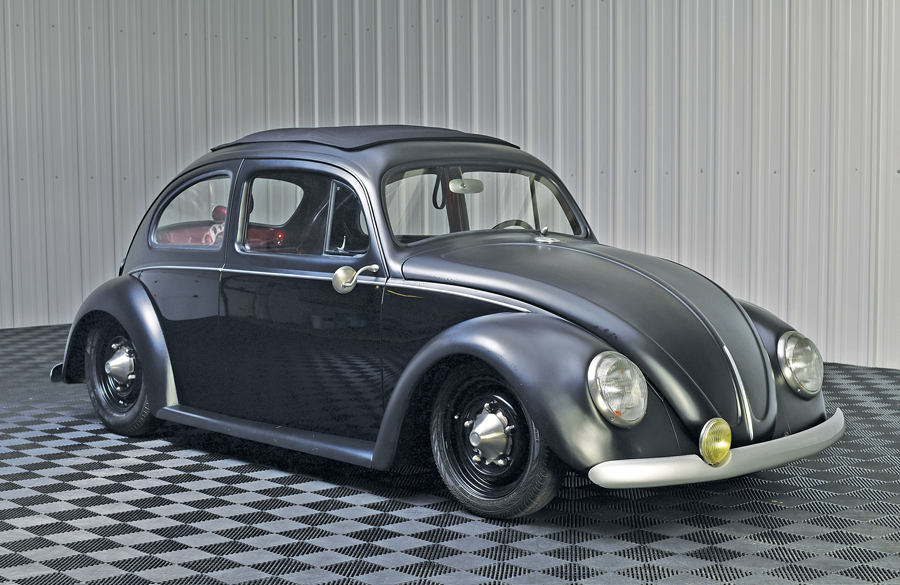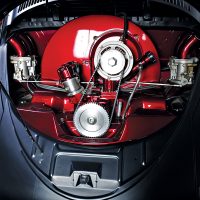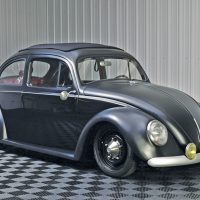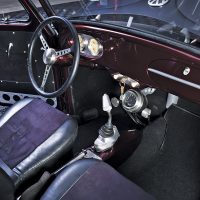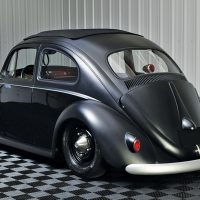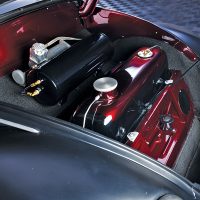SCM Analysis
Detailing
| Vehicle: | 1960 Volkswagen Beetle Custom |
| Years Produced: | From 1979 or so until now |
| Number Produced: | Who knows how many Beetles were customized? |
| Original List Price: | $1,600 |
| SCM Valuation: | $14,850 (for a custom Beetle) |
| Chassis Number Location: | Plate in trunk behind spare tire, stamped on chassis pan beneath rear seat |
| Engine Number Location: | Stamped on crankcase generator support boss |
| Website: | http://www.thesamba.com |
| Alternatives: | 1953–79 VW Beetle, custom 1955–67 Volkswagen Karmann Ghia coupe, 1973–74 Volkswagen Thing |
| Investment Grade: | C |
This car, Lot 79, sold for $22,000, including buyer’s premium, at Barrett-Jackson’s Palm Beach, FL, auction on April 11, 2019.
Next Gen collectible cars are usually models produced since the mid-1980s, but that’s not always the case.
Up-and-coming collectors are also laying claim to some older models. Vintage Volkswagens are a prime example. No one would dispute that a 1960 Volkswagen Beetle has been collectible for decades, and SCM has amply documented the soaring bids for well-restored classic VW vans and campers. A vintage Beetle with a quality restoration to original equipment and specs will always be desirable.
The point is this: It’s not always the car itself that makes a Next Gen collectible. It’s often it’s the way the car is presented. “Cal Look” and other modifications that were in fashion in the 1980s are turning up at auction and drawing respectable bids.
What’s more, they’re getting respect in the community. Purist hot-rod shows that limit participation to pre-1964 domestics and disallow replicas often accept Volkswagens with much greater latitude.
Don’t bother showing up with your Ferrari, but if you’ve got an interesting Bug, you’re in. Generally speaking, these purist gatherings pull in a much younger audience than other hot-rod shows, but they don’t overlap with the bulk of Asian and European Next Gen cars.
What Makes a Cal Bug?
No one really knows, but it’s generally believed that the first “Cal-Look” Beetle was made about 1979, and the movement was big by the mid-’80s.
Like most organic hot-rod movements, there aren’t any hard-and-fast rules about how to build a Cal Bug. Kids chose VWs because they were cheap and there were plenty of them in rust-free Southern California. Sounds familiar, right?
Cal Bugs tend to be dramatically lowered, de-chromed, and the top edge of the engine deck lid is tipped out. Tipping the deck lid out is practical because it improves cooling airflow to the engine compartment.
Enhanced cooling is necessary because the next part of a Cal Bug is performance. There’s only so much power you can wring out of an air-cooled VW engine, but you can get it without spending a fortune.
Increasing displacement is relatively easy because the VW engine uses replaceable cylinders. The basic 1,600-cc VW design supports expanded displacements from 1,776 cc up to 2,332 cc. The original cylinder heads can be ported and fitted with twin carburetors — similar to a Porsche 356.
Finally, a free-flowing exhaust helps the engine breathe. It’s comparatively inexpensive to push a VW engine well above 100 horsepower and 100 foot-pounds of torque. In a 1,600-pound car, that’s not bad at all.
Once the mechanical work is done, a Cal Bug should look good. A nice paint job and a bit of work on lights, bumpers and interior finishes the build. That’s all up to the owner’s taste, but most examples go for a street-racing look.
A collectible Cal Bug
Barrett-Jackson sold this modified 1960 Beetle for $22,000, which may or may not be a high-water mark for a Cal Bug, but it’s probably close. A check of recent sales in SCM’s Platinum Auction Database showed that less-spectacular Cal Bugs have pulled a little over half that much (SCM# 6863912 and SCM# 6832576).
This Beetle is a great example of the Cal-Bug look, and it should have plenty of power from its 2.0-liter engine. The cloth sunroof and vintage looks of the 1960 rear deck lid and taillights make this Beetle special in any context. The listing didn’t mention it, but unless we’re mistaken, that’s an air-suspension setup in the trunk.
With the effort put into this custom, it’s certain that the $22,000 purchase price didn’t come close to the amount the builder invested. This car was well bought, and this sale is a signal for other Cal Bugs to come out of storage and rejoin the world as Next Gen collectibles. ♦
(Introductory description courtesy of Barrett-Jackson.)
